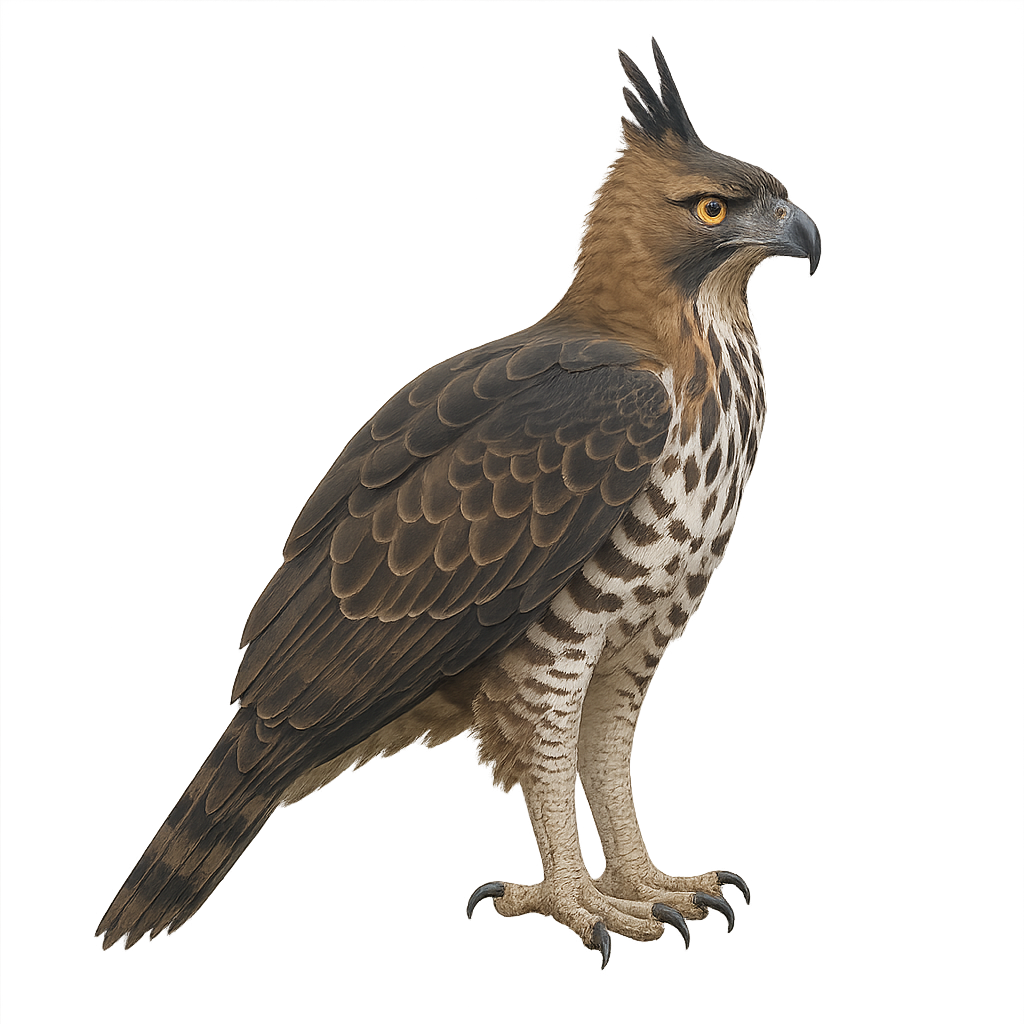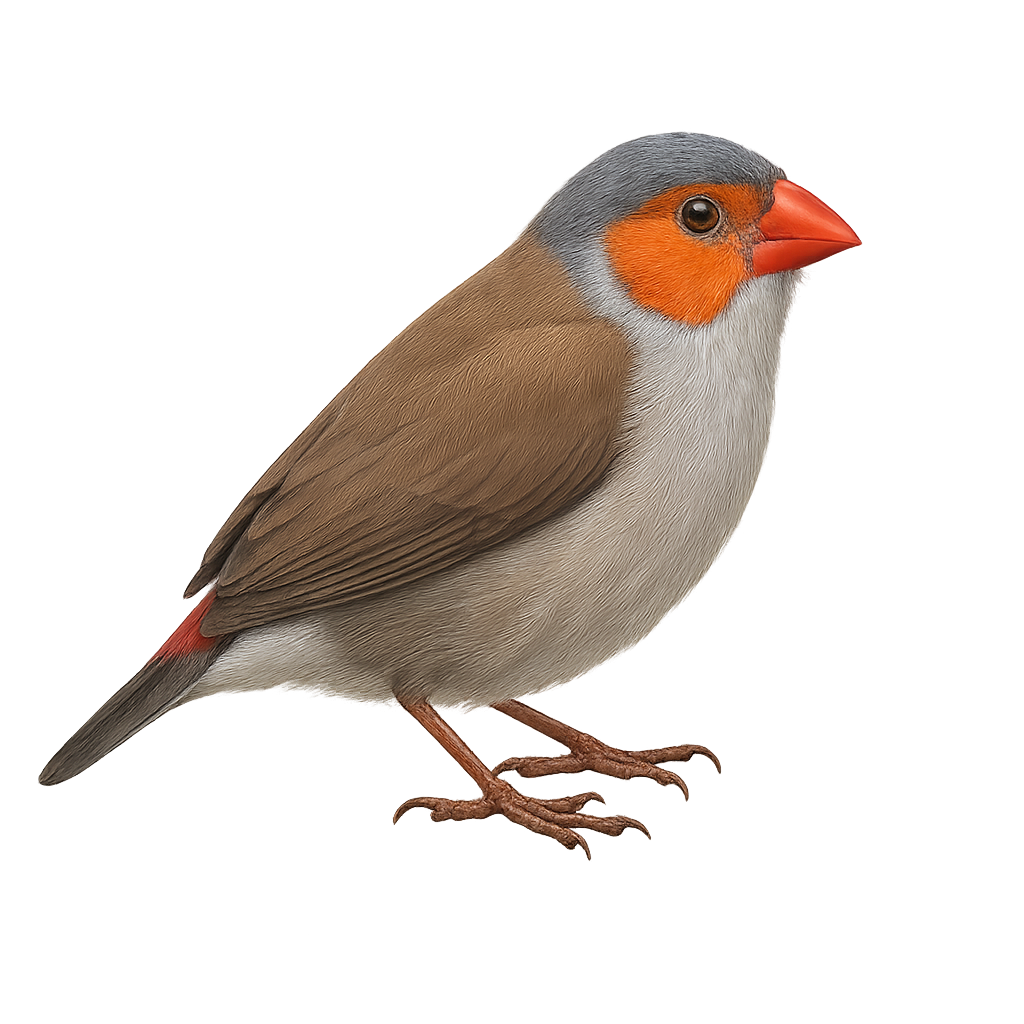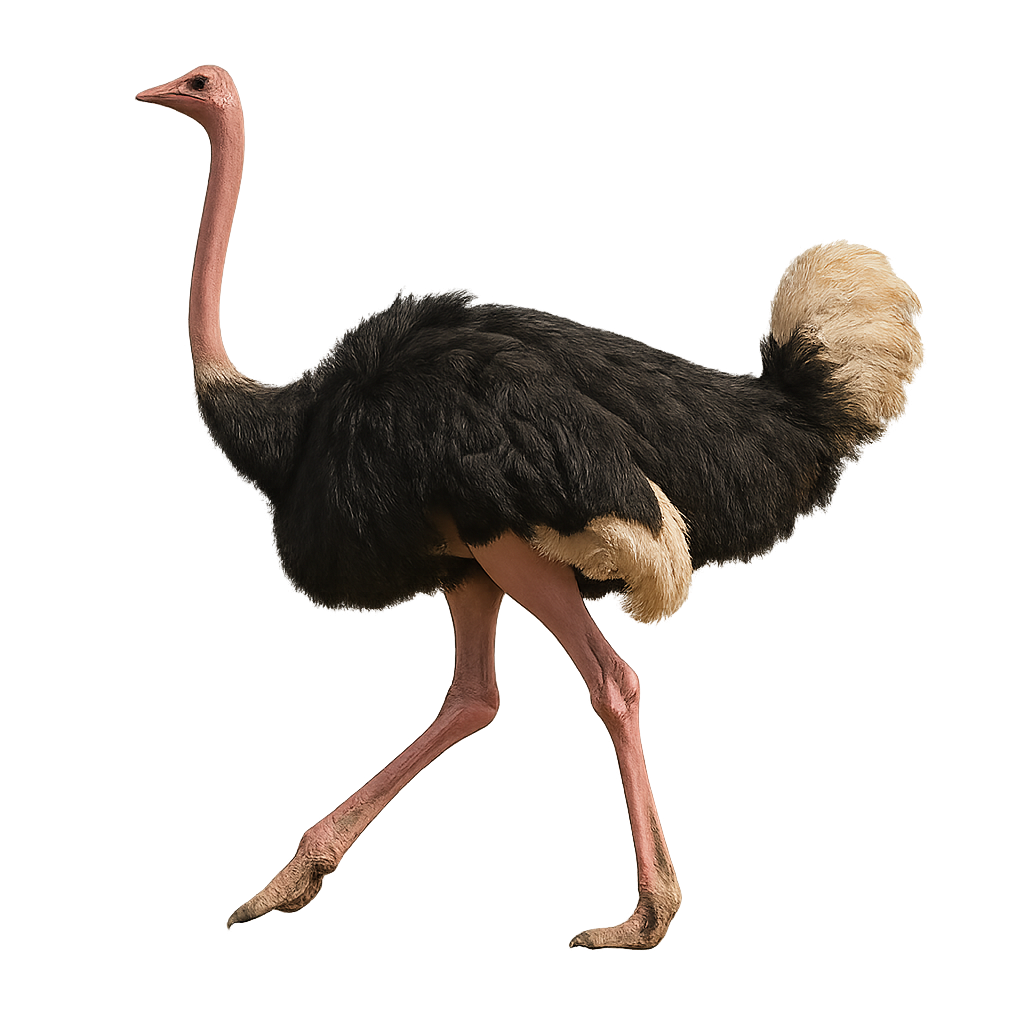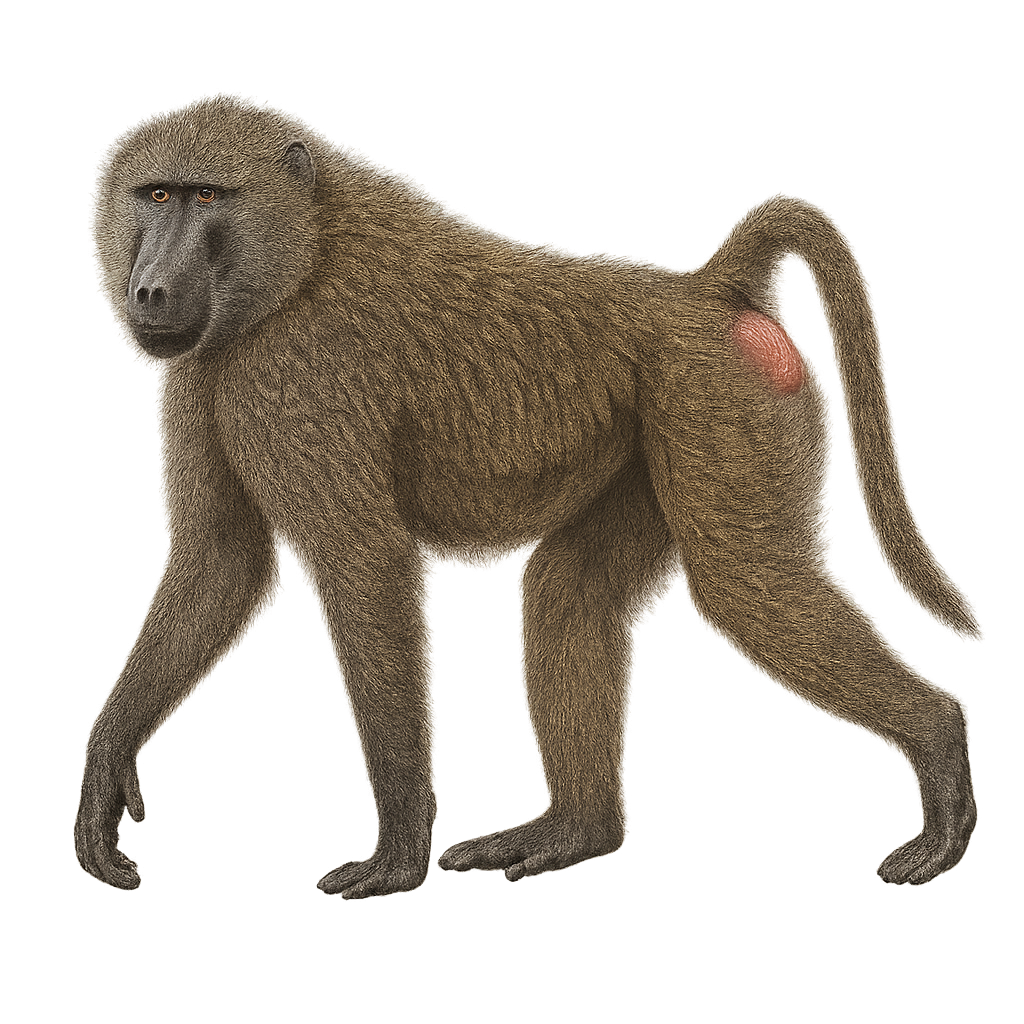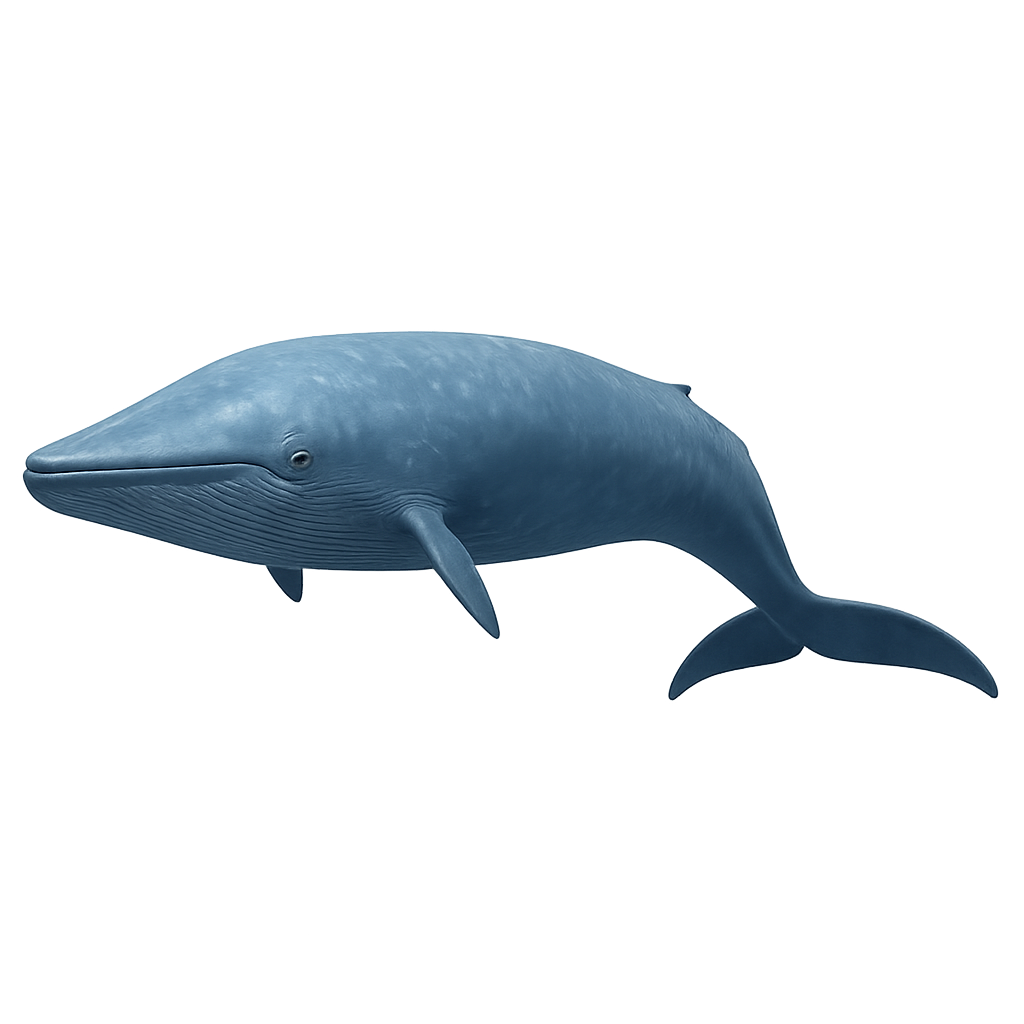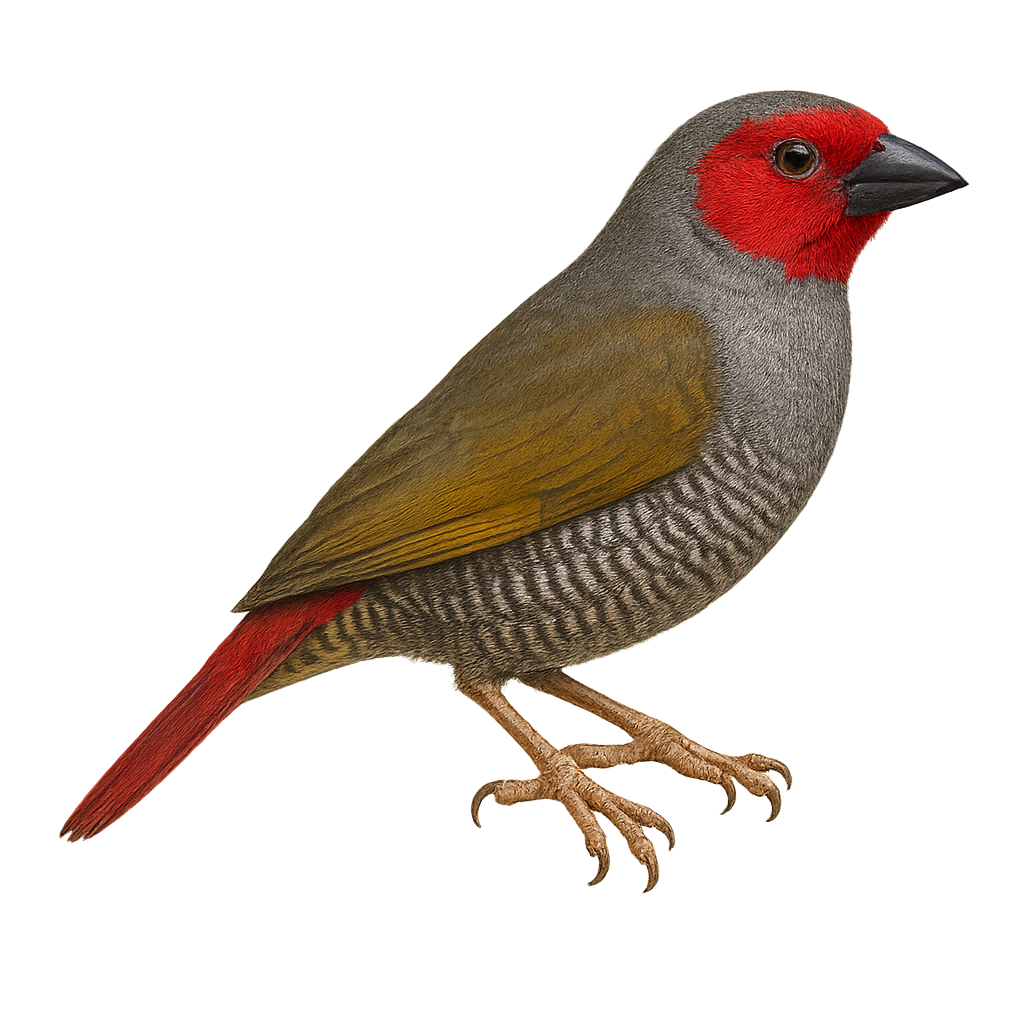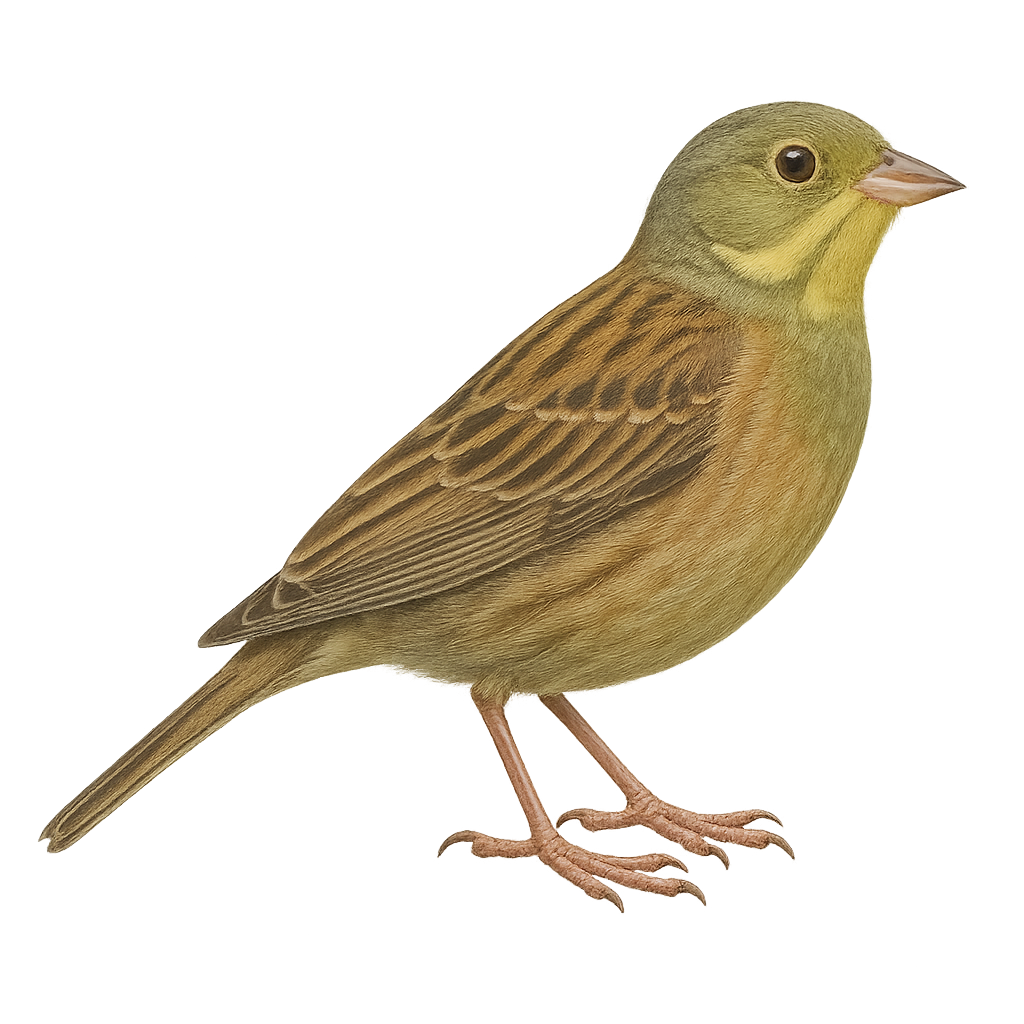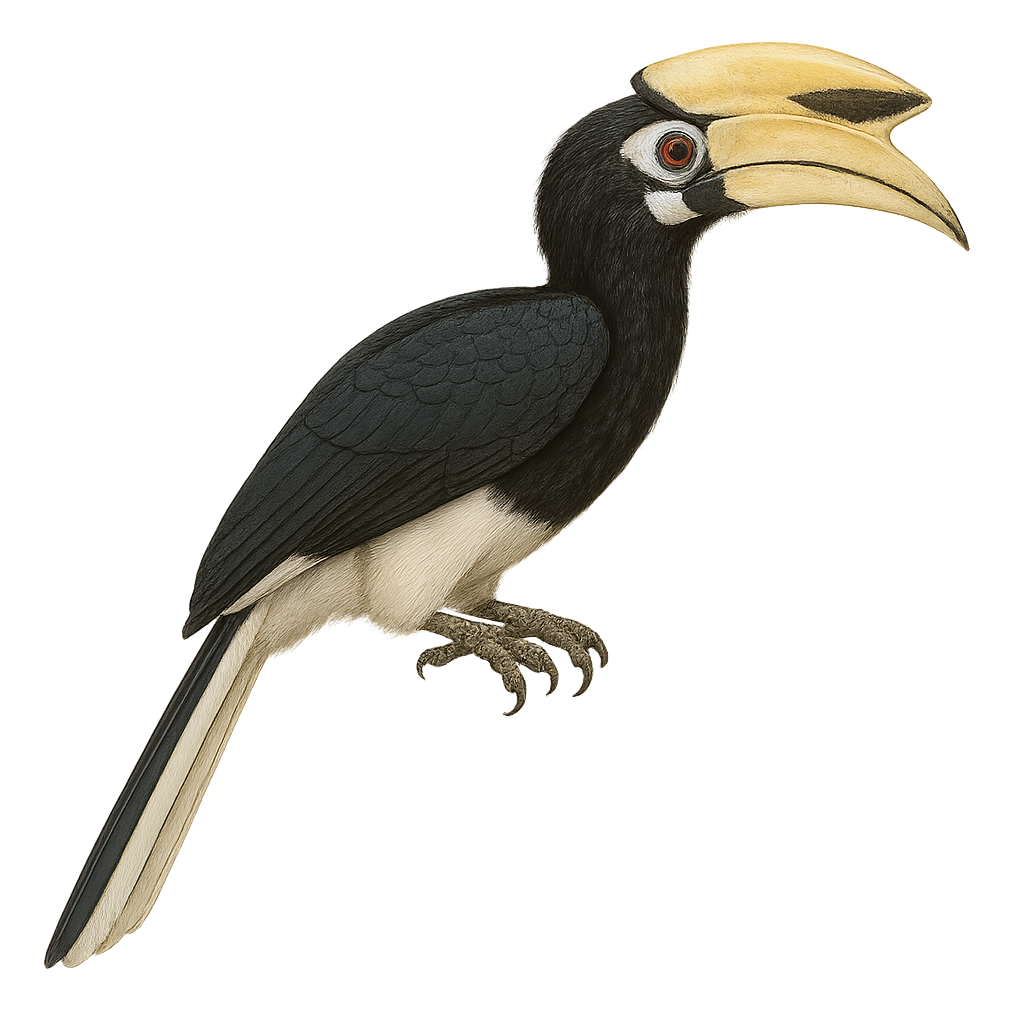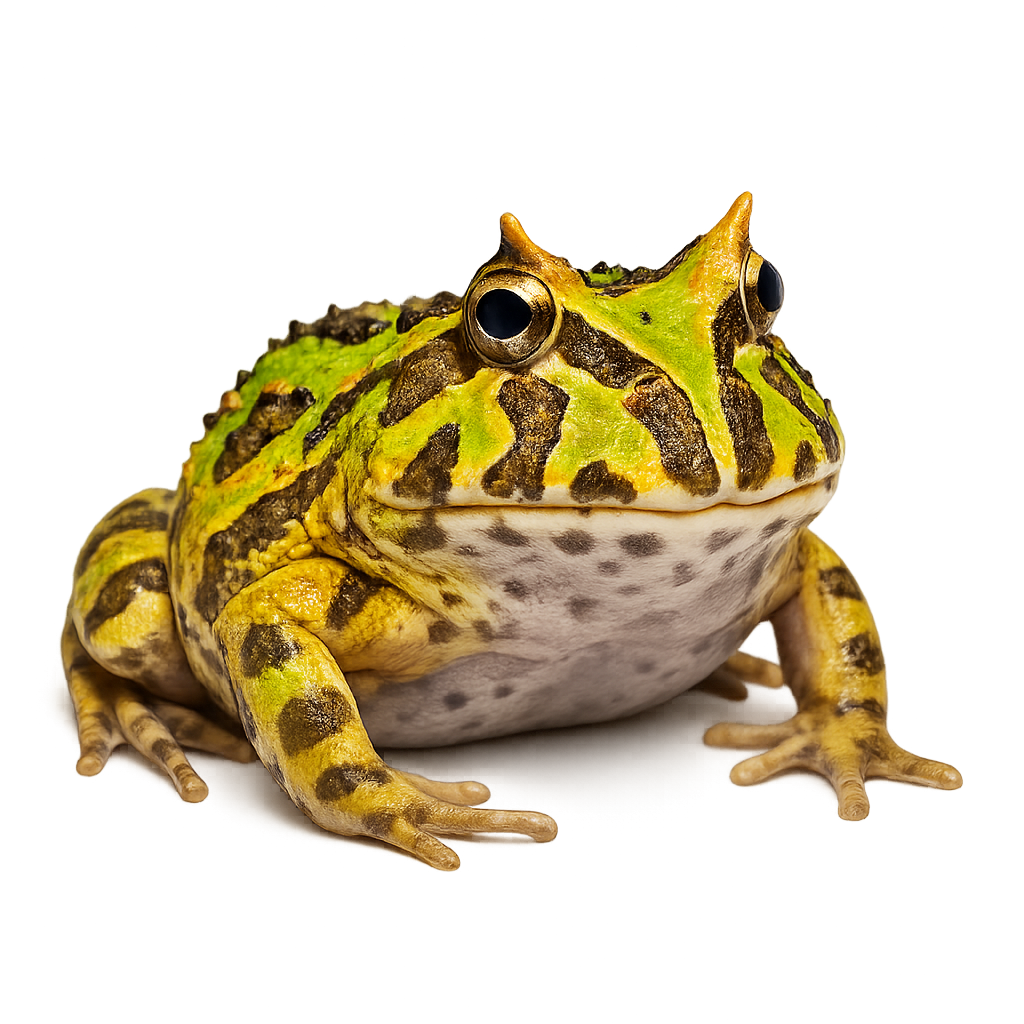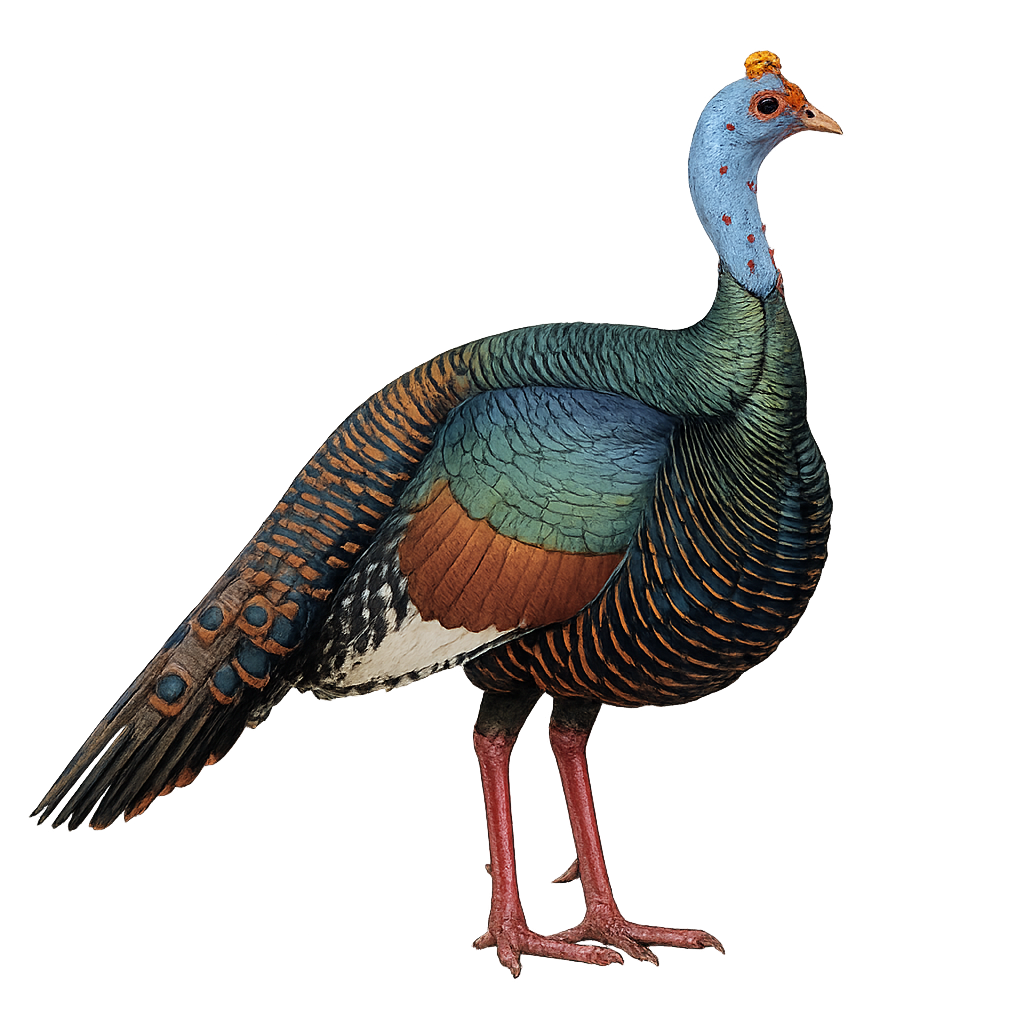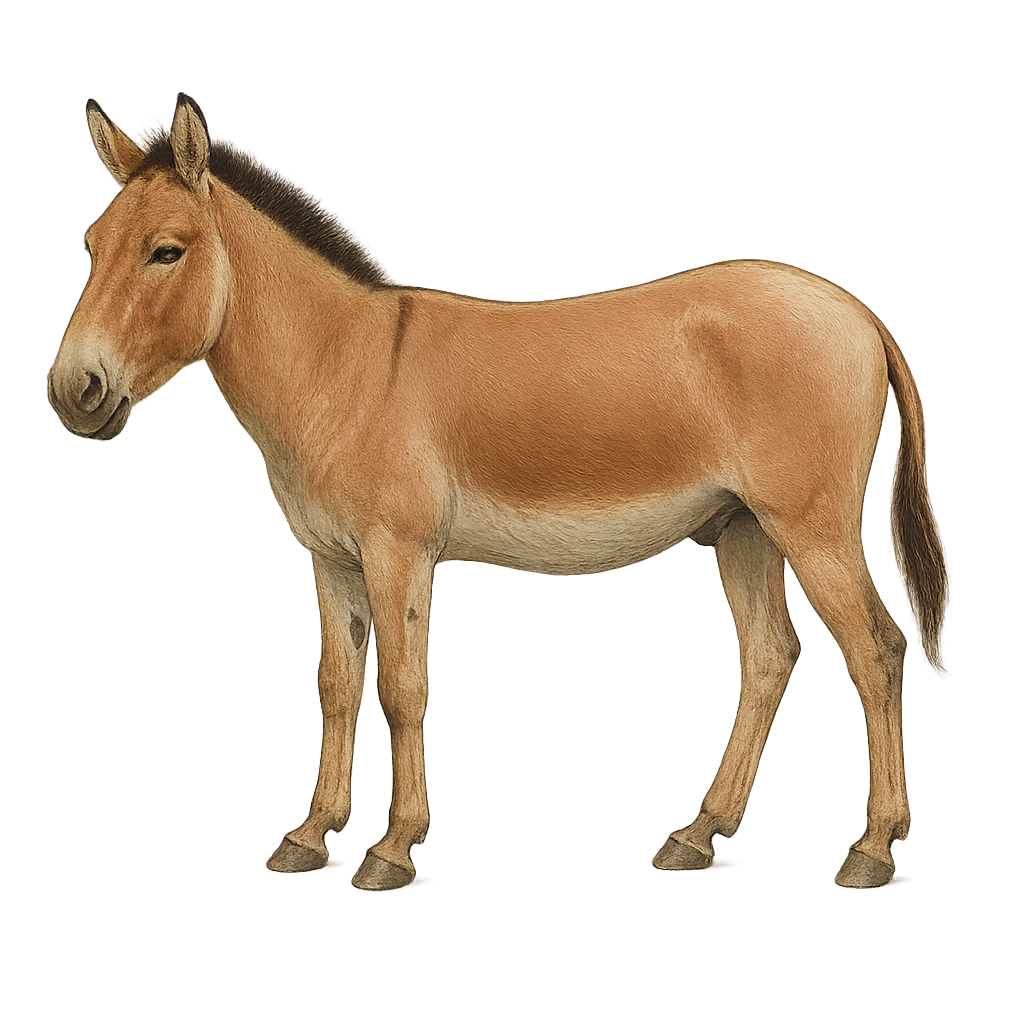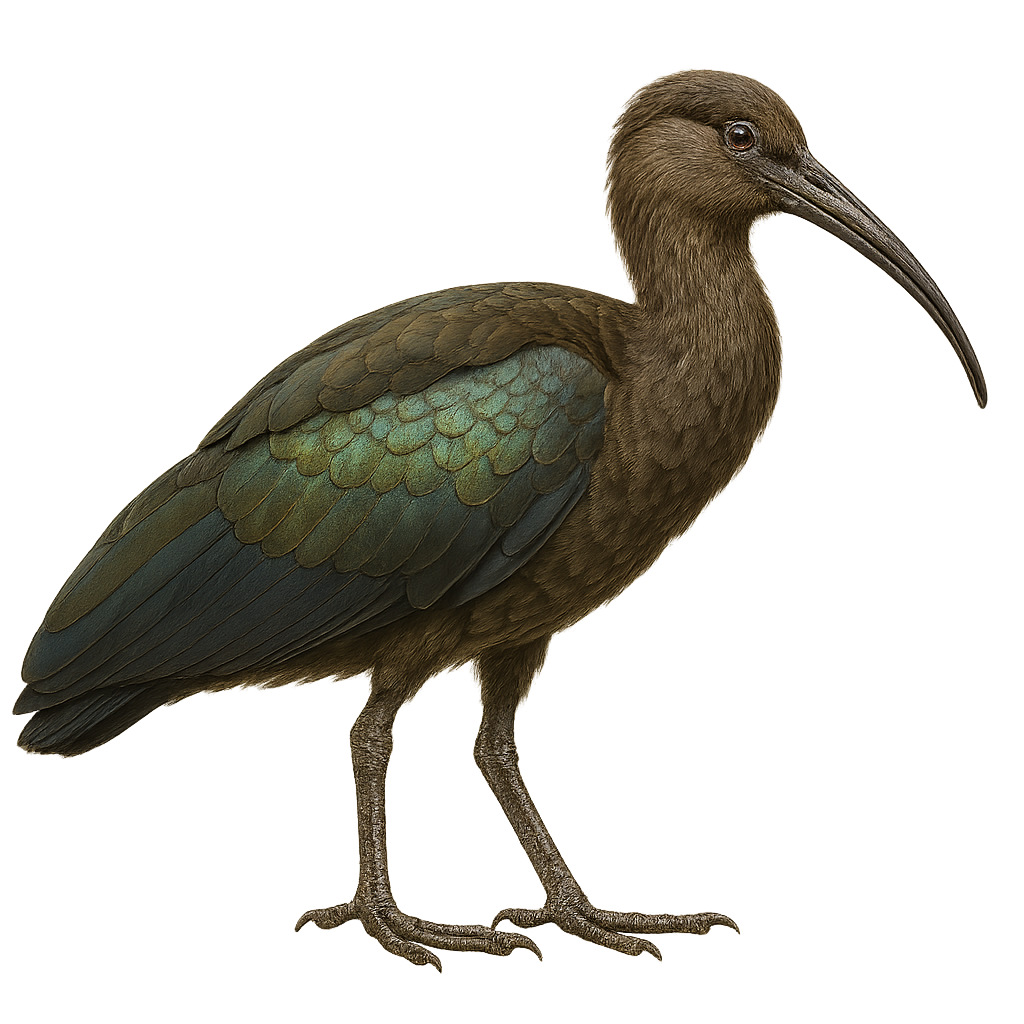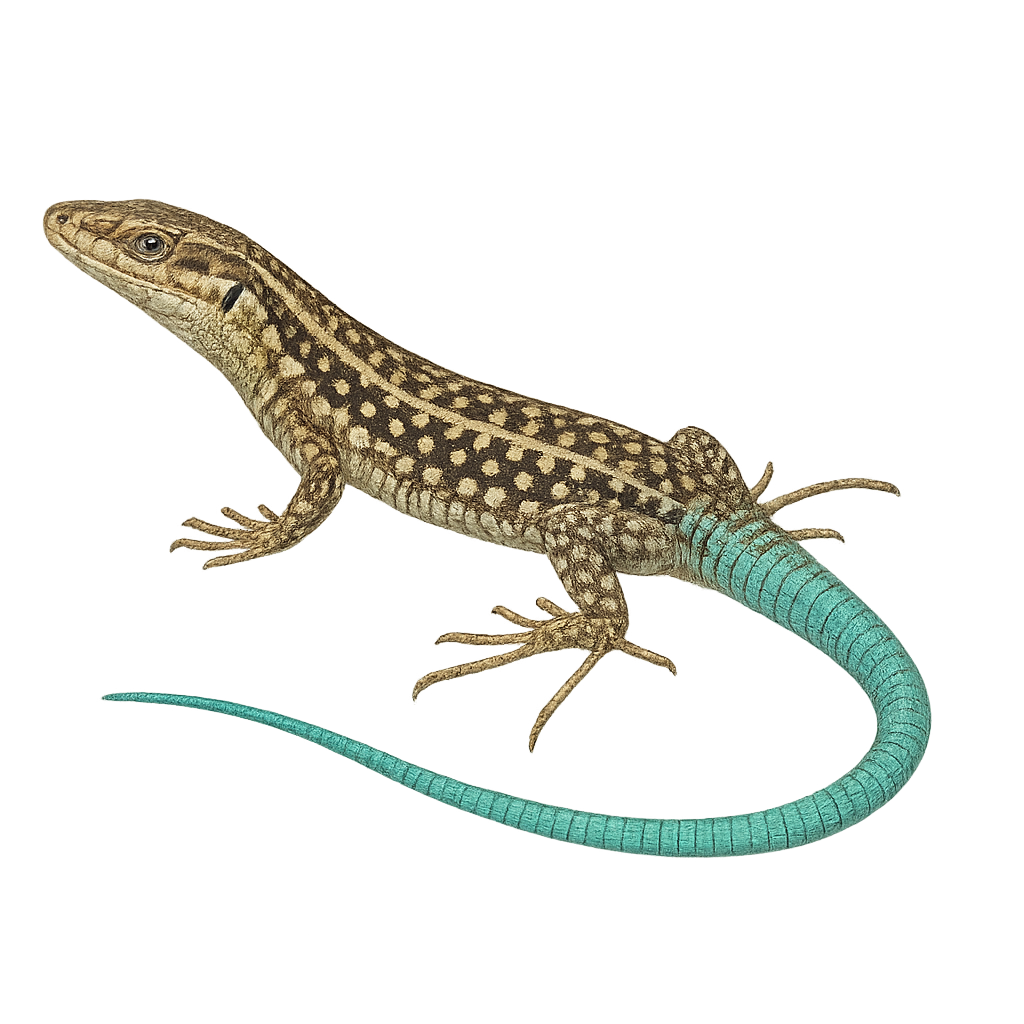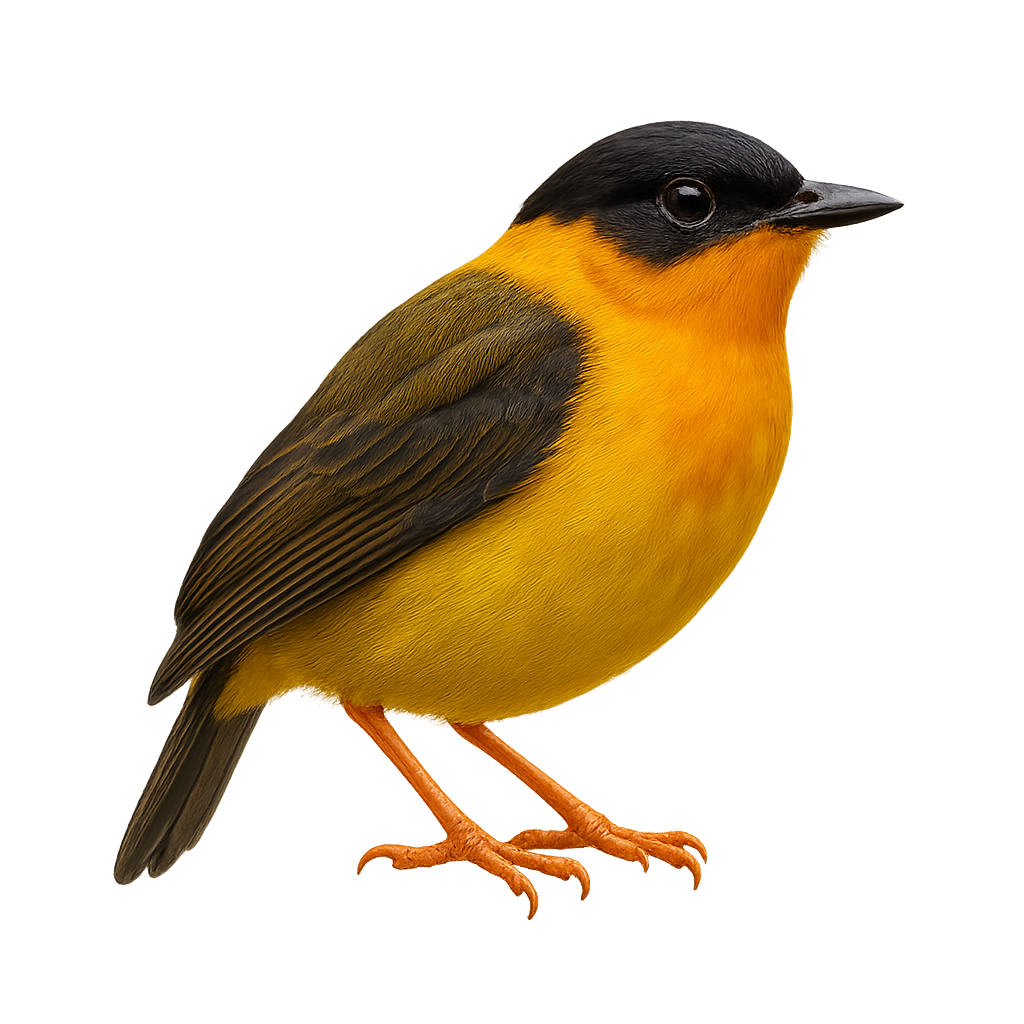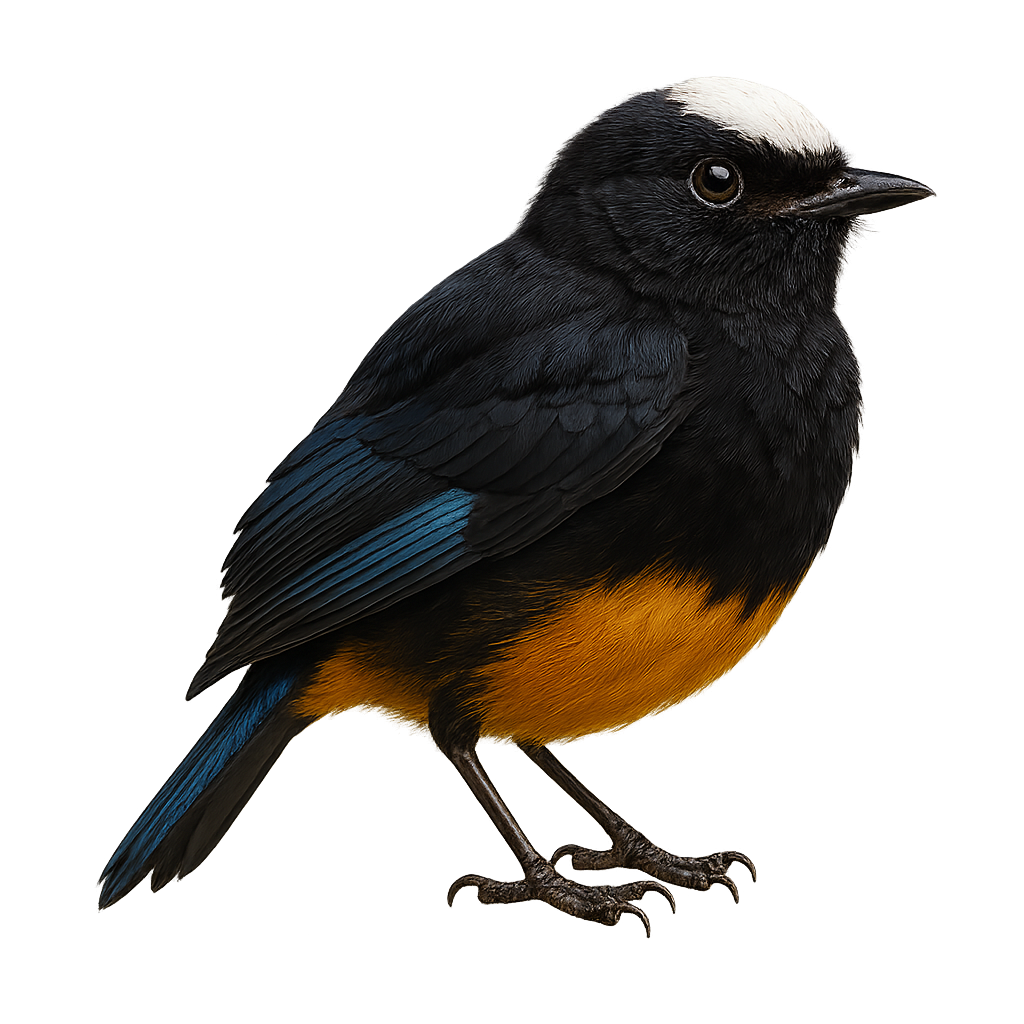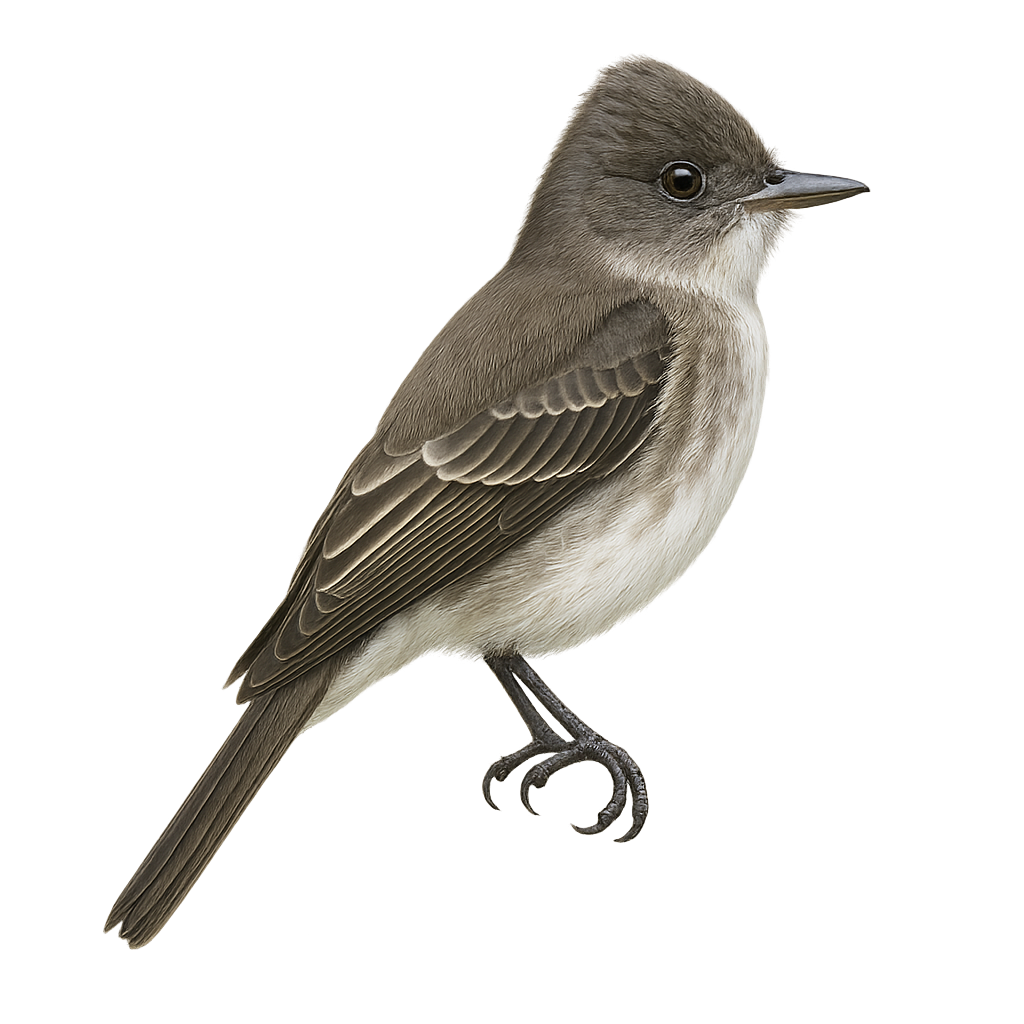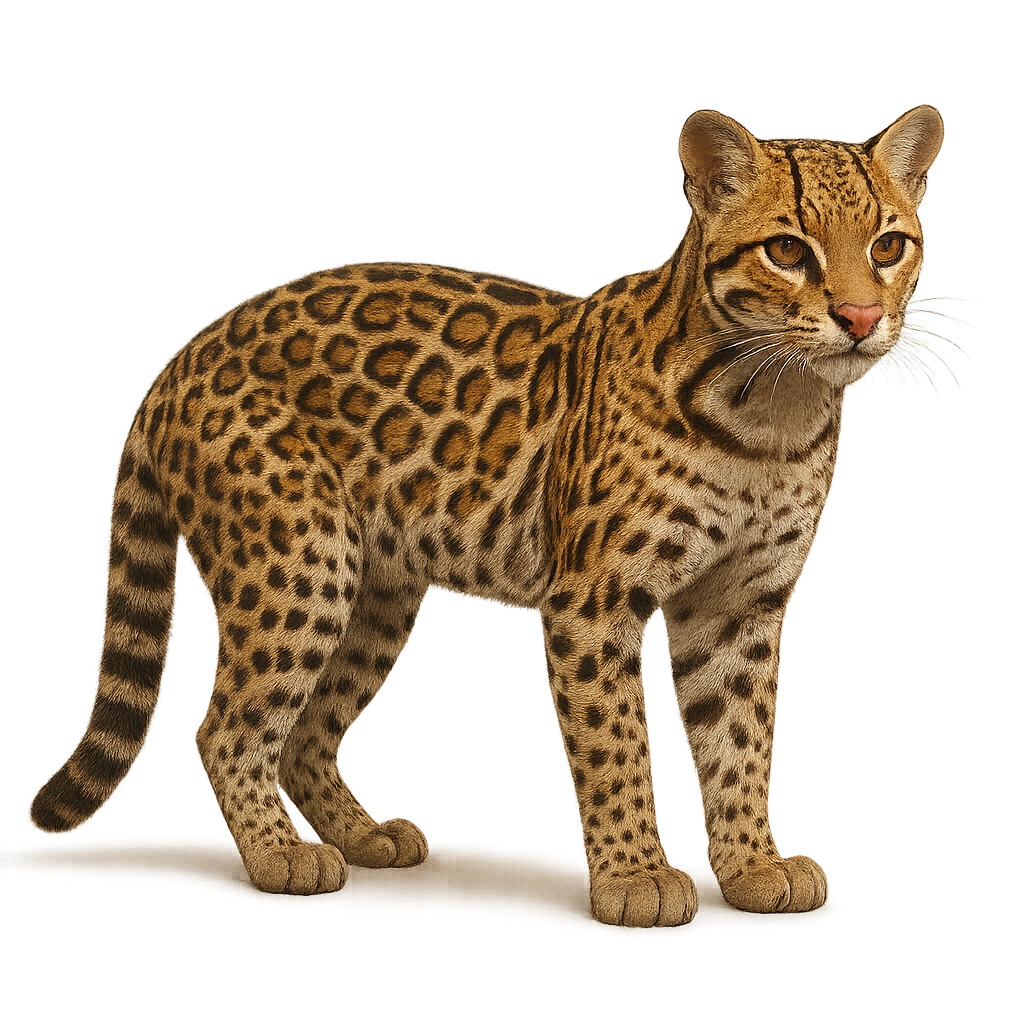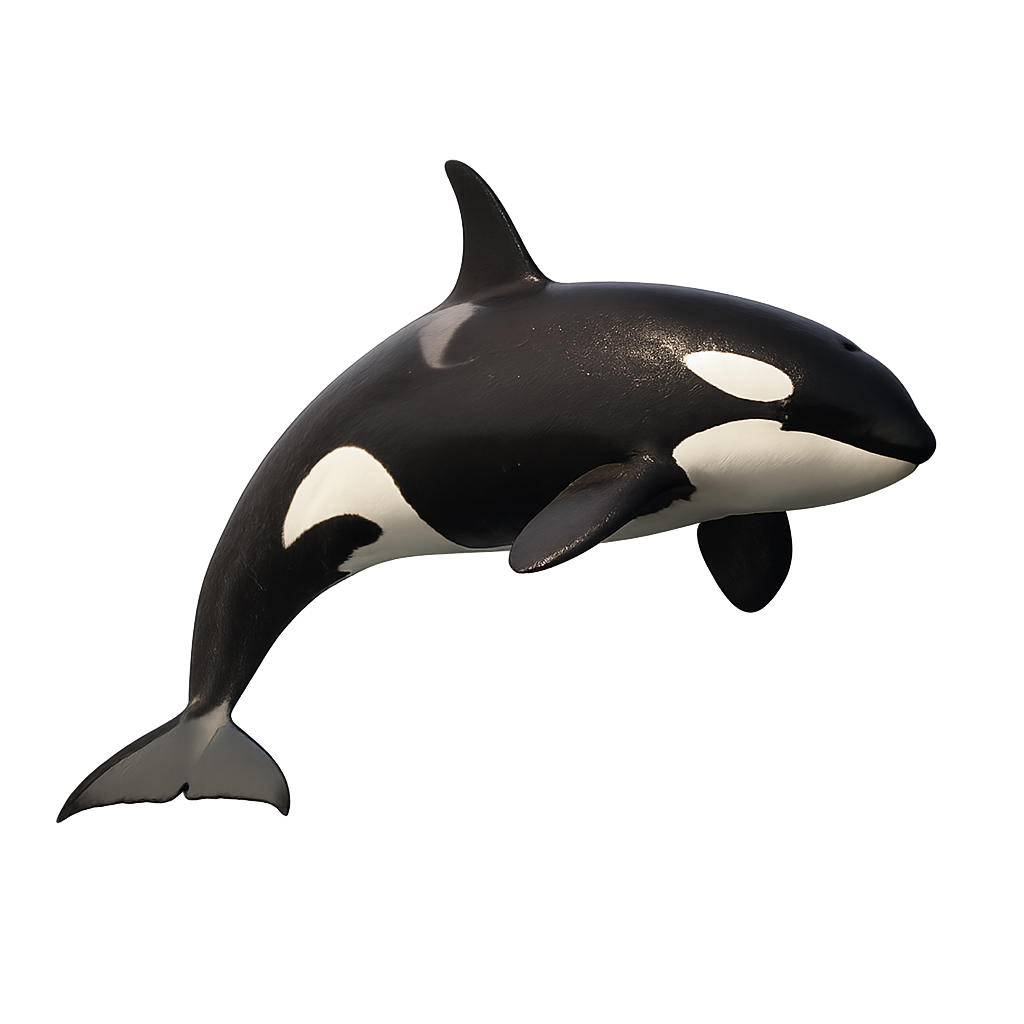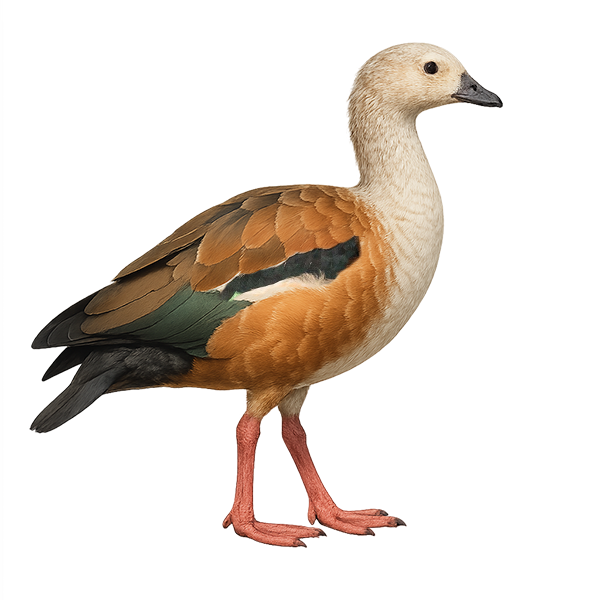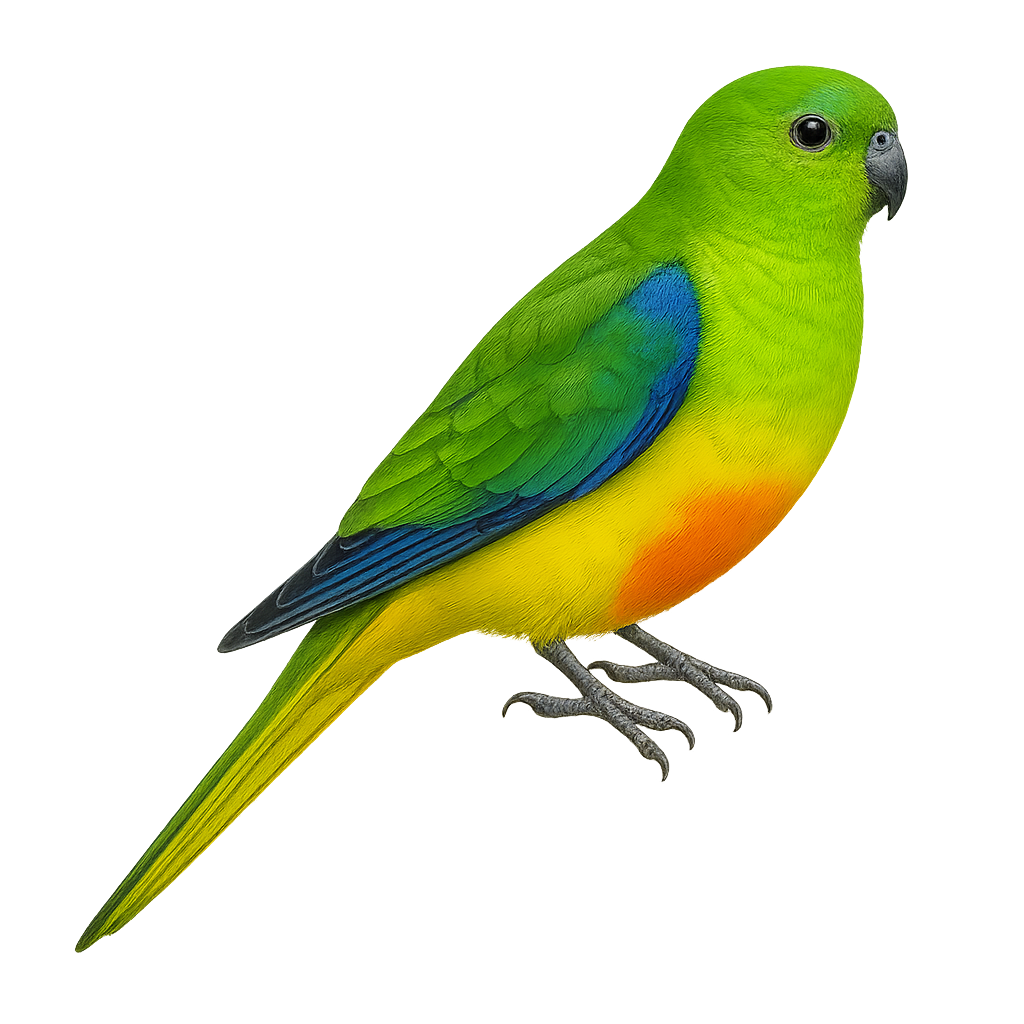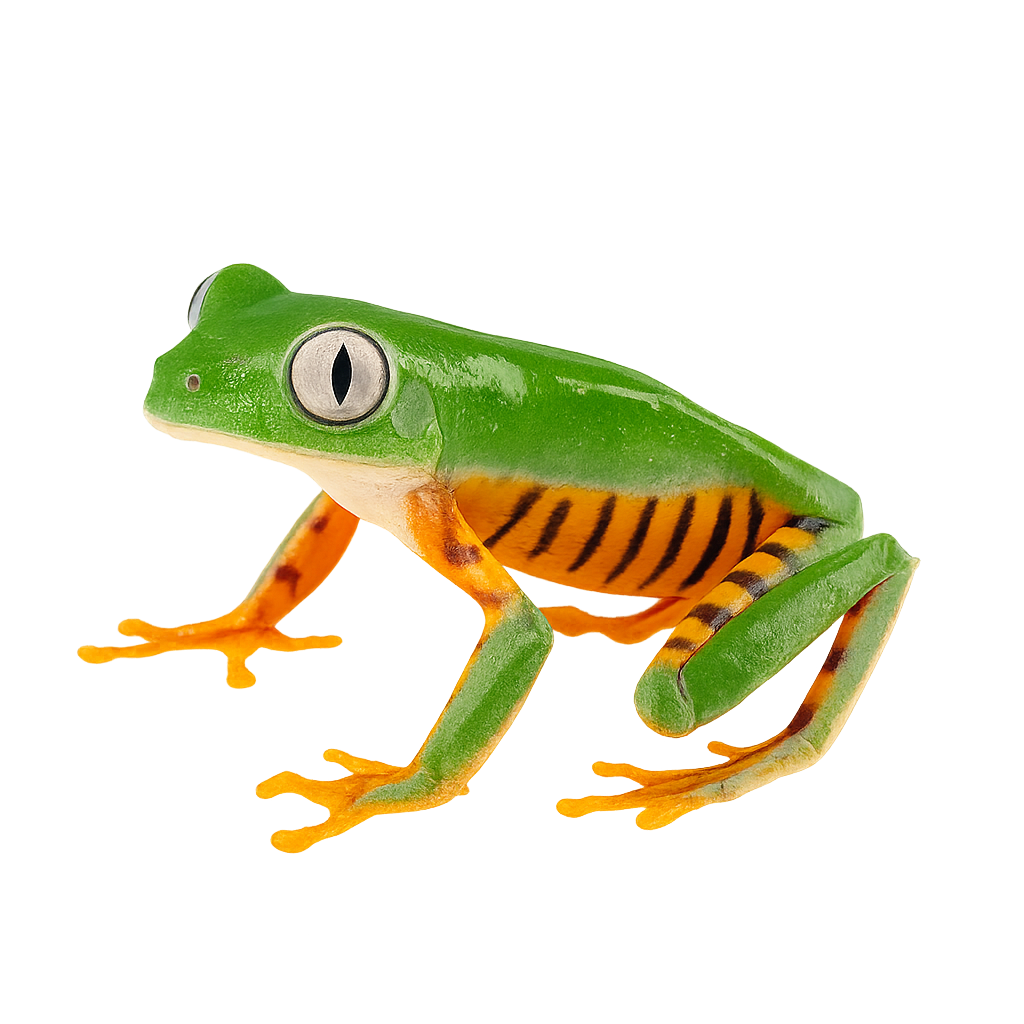The Ornate Hawk-Eagle is a forest raptor from tropical America, measuring between 58 and 67 cm in length. It features a raised black crest, rufous head and flanks, a white throat bordered with black, and a black-and-white barred underside. Juveniles have paler plumage with a white head. An agile predator, it primarily hunts medium to large birds (toucans, parrots, tinamous), arboreal mammals (squirrels, agoutis), and occasionally reptiles. It inhabits primary and secondary humid tropical forests from southern Mexico to Argentina. Deforestation and hunting have led to population declines, classifying it as Near Threatened by the IUCN.
The Orange-cheeked Waxbill is a small, colorful bird native to sub-Saharan Africa. It is easily recognized by its bright orange cheeks and grey-brown plumage. Measuring about 10 to 12 cm in length and weighing between 7 and 10 grams, this bird inhabits savannas, moist grasslands, and cultivated areas, feeding mainly on seeds and insects. It is a social species, often seen foraging on the ground in groups. Its breeding season varies by region, and it is known for building dome-shaped nests in dense bushes.
The Ostrich is the largest living bird on Earth, known for its impressive size and powerful long legs that allow it to run at remarkable speeds, reaching up to 70 km/h. Native to Africa, the Ostrich inhabits savannas and desert regions, where it primarily feeds on plants, seeds, and small insects. Although it cannot fly, its wings and plumage help it maintain balance and protect itself from the sun.
The Ostrich is a social bird, living in groups and known for its interesting defense behaviors. When threatened, it can run at high speeds to flee or crouch to blend into the ground, a method that helps it escape predators.
The olive baboon, or Papio anubis, is a robust and adaptable primate widely distributed in sub-Saharan Africa. It is characterized by its olive-green coat, powerful limbs, and elongated snout. Males are significantly larger than females, weighing up to 30 kg. These baboons live in complex social groups of up to 150 individuals, where hierarchy is crucial. As opportunistic omnivores, they feed on fruits, seeds, insects, and small animals. Their habitat ranges from savannas to tropical forests, demonstrating great adaptability. Although their status is currently "least concern," deforestation and hunting pose potential threats.
The Osprey is a remarkable raptor, easily identifiable by its white and brown plumage and keen eyes. This large bird of prey is specialized in fishing, catching fish by diving at high speed from the air. It is mainly found near lakes, rivers, and coastal areas in Europe, Asia, Africa, and the Americas, where it builds large nests on trees or pylons. The Osprey is a solitary bird and an extremely precise hunter, often seen hovering over the water before diving to catch its prey.
Despite its great agility and ability to catch fish, the Osprey is vulnerable to water pollution and habitat destruction. Conservation efforts are underway to protect this iconic species.
Omura’s whale is a small baleen whale measuring 8–12 m in length, with a slender grey body and a slightly asymmetrical head. It inhabits shallow tropical and subtropical waters, feeding mainly on small crustaceans and fish by filtering water through its baleen plates. Usually seen alone or in small groups near the surface.
The Orange-breasted Waxbill, or Pytilia hypogrammica, is a small, colorful bird belonging to the Estrildidae family. It is primarily found in West Africa, particularly in savannas and open wooded areas. This bird is notable for its vibrant plumage, with a bright orange belly contrasting with gray-green wings and back. Both males and females display similar colors, although males are often more vivid. They primarily feed on seeds but also consume insects, especially during the breeding season. Their song is soft and melodious, often used to attract mates. Although their population is stable, deforestation and capture for the pet trade can pose potential threats.
Small passerine 16–17 cm long with streaked olive-brown plumage and a greenish-grey head. Inhabits cereal fields and margins, feeding mainly on seeds, supplemented by insects during breeding. Pairs nest on the ground, hiding nests among crops or low vegetation, and males sing from low perches to defend territory.
The Oriental Pied Hornbill, Anthracoceros albirostris, is a captivating bird native to the tropical forests of Southeast Asia. Easily identifiable by its large, white beak topped with a distinctive black casque, it measures between 60 and 90 cm. Its striking black and white plumage adds to its allure. These birds live in family groups and are known for their complex social behavior. They primarily feed on fruits but also consume insects and small animals. Their resonant calls often echo through the canopy. The Oriental Pied Hornbill plays a crucial role in seed dispersal, thus contributing to the health of forest ecosystems.
The Oriental Stork, Ciconia boyciana, is a large wading bird belonging to the Ciconiidae family. It is characterized by its striking white plumage contrasted with black wings and a long black bill. Standing about 110 to 115 cm tall, it boasts an impressive wingspan of up to 2 meters. This species is primarily found in East Asia, particularly in China, Russia, and Japan. It inhabits wetlands, marshes, and rice paddies, feeding on fish, amphibians, and insects. The Oriental Stork is an endangered species, mainly due to habitat loss and pollution. Conservation efforts are underway to protect this iconic species.
The Desert Horned Frog is an amphibian species found in the dry, sandy regions of South America, particularly in Argentina, Paraguay, and Uruguay. This toad is easily recognized by the large 'horns' above its eyes, giving it an imposing appearance. It is primarily terrestrial and often hides in the sand or under dead leaves to protect itself from the daytime heat. This frog is a voracious predator, using its large mouth to capture prey as large as small mammals or other amphibians. It is primarily nocturnal and waits until nightfall to hunt.
The Bombina orientalis, or Oriental fire-bellied toad, is a small amphibian species, typically measuring between 4 and 5 cm. Its skin is smooth and green with black spots on the back, while its belly displays a bright red-orange coloration with black patterns, serving as a warning signal to potential predators. Native to East Asia, it is primarily found in wet areas such as marshes, rice paddies, and flooded forests. Known for its semi-aquatic behavior, it spends a lot of time in water. Its ability to secrete skin toxins protects it from predators.
The Orinoco crocodile is a large aquatic reptile in the family Crocodylidae, measuring 3–4 m in length, with olive-green scaly skin and a heavy head. It inhabits rivers, lakes and swamps of the Orinoco basin, feeding mainly on fish, turtles and small mammals. During nesting, the female builds a vegetation mound on the riverbank and lays 30–40 eggs, guarding them for about 80 days.
The Ocellated Turkey, Meleagris ocellata, is a species native to the tropical forests of the Yucatán Peninsula. It is known for its iridescent plumage with metallic hues and eye-like spots on its tail feathers. Males have a bright blue head with red and yellow caruncles. Smaller than the North American Wild Turkey, it is omnivorous, feeding on seeds, fruits, insects, and small animals. The Ocellated Turkey is a social bird, often found in small groups outside the breeding season. Its population is declining due to hunting and habitat loss.
The Oophagous Slender-legged Treefrog, or Osteocephalus oophagus, is a fascinating species of tree frog primarily found in the humid tropical forests of South America. It is particularly notable for its unique reproductive behavior: females lay their eggs in water-filled tree cavities, and the tadpoles feed on unfertilized eggs that the mother regularly deposits. This feeding strategy, known as oophagy, is rare among amphibians and allows the tadpoles to survive in environments where food is limited. The Oophagous Slender-legged Treefrog is medium-sized, with smooth skin and color patterns that allow it to effectively camouflage in its natural habitat. It plays a crucial role in the ecosystem as an insect predator, helping to regulate invertebrate populations.
The Olive-backed Woodcreeper is a small bird, about 15 cm in length, characterized by its olive-brown plumage and greyish head and neck. Its slender, slightly curved bill is perfect for probing bark in search of insects. This species is primarily found in the tropical and subtropical forests of Central and South America. It is often seen climbing tree trunks, using its sharp claws for grip. Although discreet, its melodious song is easily recognizable. It plays a crucial role in the ecosystem by controlling insect populations.
The Equus hemionus, commonly known as the onager or Asiatic wild ass, is a wild equid native to Central Asia. Adapted to arid and semi-arid environments, such as deserts and steppes, it has a light brown coat that becomes paler in winter, and a short, upright mane. Onagers are social animals that live in groups, often led by a dominant male. They primarily feed on grasses but can also consume shrubs and herbs. Although their population has declined due to hunting and habitat loss, conservation efforts are underway to protect this iconic species.
The Olive Ibis, scientifically known as Bostrychia olivacea, is a shy and elusive bird found primarily in the tropical rainforests of Central and West Africa. Its distinctive olive-green plumage with metallic sheen makes it a unique sight. Preferring swampy areas and riverbanks, it feeds on insects, small crustaceans, and mollusks. Although often solitary, it can be seen in small groups during the breeding season. The Olive Ibis is a wary bird, making it less studied compared to other ibis species. Its conservation status is concerning due to habitat loss from deforestation.
The Oertzen's Lizard, or Anatololacerta oertzeni, is a small reptile belonging to the Lacertidae family. Native to the mountainous regions of Turkey and the Greek islands, it is characterized by its green and brown coloration, which allows it to blend effectively into its natural environment. This lizard is primarily diurnal and prefers rocky and sunny habitats. It feeds on insects and other small invertebrates. Although its conservation status is not of concern, it is essential to preserve its natural habitats to ensure its survival. Males and females can be distinguished by slightly different patterns, with males often being more colorful.
The Orange-collared Manakin, or Manacus aurantiacus, is a small, vibrant bird found in the tropical rainforests of Central America. Males are particularly striking with their bright orange head and neck contrasting against a black body, while females display more subdued olive-green tones. These birds are famous for their elaborate courtship displays, where males perform intricate dances to attract females. They primarily inhabit dense undergrowth, feeding on fruits and insects. Although their habitat is threatened by deforestation, they remain relatively common within their range.
The Orange-bellied Manakin, or Lepidothrix suavissima, is a small, colorful bird native to the humid tropical forests of South America, particularly in the mountainous regions of Venezuela. This passerine is known for its vibrant plumage, with males displaying bright colors to attract females during the breeding season. Females, on the other hand, have more subdued, often olive-green plumage, allowing them to blend into the dense foliage. The Orange-bellied Manakin is a diurnal bird, active mainly during the day, and feeds primarily on fruits and insects. It is often seen in small groups, although it can also be solitary. Its courtship dance is a fascinating spectacle, with the male performing complex movements to woo his mate.
The Ornate Melidectes, or Melidectes torquatus, is a bird endemic to New Guinea. It is characterized by its olive-brown plumage with a distinctive white collar around its neck. This bird measures about 20 to 25 cm in length and has a slightly curved beak, adapted to its diet mainly consisting of nectar and insects. It primarily inhabits tropical rainforests and mountainous areas, playing a crucial role in plant pollination. Although generally suspicious, it can become accustomed to human presence in protected areas. Its population is stable, but deforestation poses a potential threat to its natural habitat.
The Olive-sided Flycatcher is a medium-sized migratory bird belonging to the Tyrannidae family. It is easily recognizable by its slender silhouette and distinctive olive sides. Its plumage is primarily gray-brown with a contrasting white chest. This bird is often seen perched high, scanning its surroundings for flying insects, its main food source. It is known for its distinctive song, often described as "quick, three beers!" in English. The Olive-sided Flycatcher primarily nests in the coniferous forests of northern America but migrates to Central and South America for the winter. Its population is declining due to habitat loss and climate change.
The Ocelot is a medium-sized wild cat, measuring between 55 and 100 cm in length (excluding the tail) and weighing between 8 and 16 kg. It is distinguished by its spotted and striped coat, which helps it blend effectively into dense forests and wooded areas where it lives. Its fur is generally golden or grayish, with black marks in the form of spots or rosettes across the body. The Ocelot is a nocturnal and solitary hunter, primarily feeding on small mammals, birds, reptiles, and fish. It is agile and fast, capable of climbing trees to hunt or escape predators. This cat is primarily found in Central and South America, in tropical forests, savannas, and mountainous areas. While its population remains stable in some regions, the Ocelot is threatened by deforestation, illegal hunting, and habitat loss.
The Okapi is a herbivorous mammal native to the rainforests of the Democratic Republic of Congo in Central Africa. It measures between 1.5 and 2 meters in length and weighs between 200 and 350 kg, resembling a combination of a giraffe and a horse. Its coat is generally dark brown with characteristic white bands on its legs, similar to those of a zebra, hence its nickname "zebra-headed giraffe." The Okapi is a solitary and secretive animal, primarily feeding on leaves, fruits, and plant shoots. It inhabits dense forests, where it uses its sense of smell and great discretion to escape predators. While its population remains relatively stable, the Okapi is threatened by deforestation, poaching, and human conflict.
The Olive-backed Euphonia, or Euphonia gouldi, is a small, colorful bird from the Fringillidae family, primarily found in the humid tropical forests of Central America. It is distinguished by its vibrant plumage, with an olive-green back and bright yellow chest. Males have a metallic blue cap, while females display duller tones. This bird is often seen in pairs or small groups, feeding mainly on fruits and berries. Its melodious and varied song is often heard at dawn and dusk. Although its habitat is threatened by deforestation, the species is currently classified as of least concern by the IUCN.
The Orca, also known as the "killer whale," is a large cetacean from the dolphin family, measuring between 6 and 8 meters in length and weighing up to 6 tons. It is distinguished by its striking black and white coloration, with white patches around the eyes and on the flanks. The Orca is a top predator in the food chain, primarily feeding on fish, marine mammals, sharks, and sometimes even whales. It lives in social groups called "pods," led by the dominant female, where cooperation and hunting strategies are essential. The Orca is found in all oceans around the world, but it prefers cold and temperate waters. While its population remains relatively stable, the Orca is threatened by pollution, a decline in prey, and human-caused disturbances.
The Orinoco Goose, Oressochen jubatus, is a waterbird species typical of the wetlands and riverbanks of South America, especially in Venezuela, Colombia, and northern Brazil. It stands out with its warm brown plumage, pale head with a subtle crest, and striking red legs. A non-migratory resident, it breeds near sandy shores and flooded areas. Its diet is mainly vegetarian, feeding on seeds, shoots, and aquatic plants. Fairly wary, it usually takes flight when humans approach.
The Orange-bellied Parrot is a small parrot endemic to Australia, known for its vibrant plumage and distinct orange belly. Measuring about 20 cm in length, it features a bright green back, orange belly, and blue markings on the wings and head. This migratory species breeds in southwest Tasmania and migrates to the southeast coast of mainland Australia in winter. It primarily feeds on seeds of grasses and coastal plants. Unfortunately, it is critically endangered, with fewer than 50 wild individuals remaining. Conservation efforts include captive breeding programs and protection of its natural habitat.
The Orange-legged Leaf Frog is a medium-sized arboreal frog belonging to the Hylidae family. It is recognizable by its smooth skin and bright colors, usually green with white or yellow patterns on the sides. This species is primarily nocturnal and is found in the tropical and subtropical forests of South America, particularly in Brazil, Argentina, and Paraguay. It is well adapted to arboreal life thanks to its adhesive fingers, which allow it to climb easily. The Orange-legged Leaf Frog plays a crucial role in its ecosystem as a predator of insects, thus contributing to the regulation of harmful insect populations.


